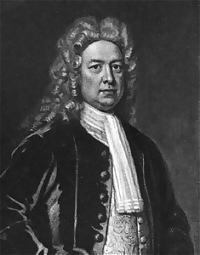|
Archaeology Today
"Archaeology Today", recorded on 9 October 1970 and broadcast on 17 November 1970, was the 21st episode of the popular British television comedy ''Monty Python's Flying Circus'' which was created by the Monty Python group. As stated on the ''Monty Python's Flying Circus'' Wiki, "The show often targets the idiosyncrasies of British life, especially that of professionals, and is at times politically charged"; this episode in particular seems to target the professional world of anthropology and archaeology. Trailer The trailer includes the theme song and an introduction to this episode of ''Monty Python's Flying Circus''. It has an animated introduction where there is a large foot that becomes broken and disintegrates into the ground, with no evidence left. Nature continues its natural action and the surroundings grow and eventually has a city built on top of the site. The city becomes condemned and is then bulldozed down with plans for new luxury apartments. While constructing the ... [...More Info...] [...Related Items...] OR: [Wikipedia] [Google] [Baidu] |
Monty Python's Flying Circus
''Monty Python's Flying Circus'' (also known as simply ''Monty Python'') is a British surreal sketch comedy series created by and starring Graham Chapman, John Cleese, Eric Idle, Terry Jones, Michael Palin and Terry Gilliam, who became known as "Monty Python", or the "Pythons". The first episode was recorded at the BBC on 7 September 1969 and premiered on 5 October on BBC1, with 45 episodes airing over four series from 1969 to 1974, plus two episodes for German TV. The series stands out for its use of absurd situations, mixed with risqué and innuendo-laden humour, sight gags and observational sketches without punchlines. Live action segments were broken up with animations by Gilliam, often merging with the live action to form segues. The overall format used for the series followed and elaborated upon the style used by Spike Milligan in his groundbreaking series '' Q...'', rather than the traditional sketch show format. The Pythons play the majority of the series' chara ... [...More Info...] [...Related Items...] OR: [Wikipedia] [Google] [Baidu] |
Polyandry
Polyandry (; ) is a form of polygamy in which a woman takes two or more husbands at the same time. Polyandry is contrasted with polygyny, involving one male and two or more females. If a marriage involves a plural number of "husbands and wives" participants of each gender, then it can be called polygamy, group or conjoint marriage. In its broadest use, polyandry refers to sexual relations with multiple males within or without marriage. Of the 1,231 societies listed in the 1980 Ethnographic Atlas, 186 were found to be monogamous, 453 had occasional polygyny, 588 had more frequent polygyny, and 4 had polyandry.''Ethnographic Atlas Codebook'' derived from George P. Murdock's ''Ethnographic Atlas'' recording the marital composition of 1,231 societies from 1960 to 1980. Polyandry is less rare than ... [...More Info...] [...Related Items...] OR: [Wikipedia] [Google] [Baidu] |
Symphony No
A symphony is an extended musical composition in Western classical music, most often for orchestra. Although the term has had many meanings from its origins in the ancient Greek era, by the late 18th century the word had taken on the meaning common today: a work usually consisting of multiple distinct sections or movements, often four, with the first movement in sonata form. Symphonies are almost always scored for an orchestra consisting of a string section (violin, viola, cello, and double bass), brass, woodwind, and percussion instruments which altogether number about 30 to 100 musicians. Symphonies are notated in a musical score, which contains all the instrument parts. Orchestral musicians play from parts which contain just the notated music for their own instrument. Some symphonies also contain vocal parts (e.g., Beethoven's Ninth Symphony). Etymology and origins The word ''symphony'' is derived from the Greek word (), meaning "agreement or concord of sound", "c ... [...More Info...] [...Related Items...] OR: [Wikipedia] [Google] [Baidu] |
Common Hill Myna
The common hill myna (''Gracula religiosa''), sometimes spelled "mynah" and formerly simply known as the hill myna or myna bird, is the myna most commonly seen in aviculture, where it is often simply referred to by the latter two names. It is a member of the starling family (Sturnidae), resident in hill regions of South Asia and Southeast Asia. The Sri Lanka hill myna, a former subspecies of ''G. religiosa'', is now generally accepted as a separate species ''G. ptilogenys''. The Enggano hill myna (''G. enganensis'') and Nias hill myna (''G. robusta'') are also widely accepted as specifically distinct, and many authors favor treating the southern hill myna (''G. indica'') from the Nilgiris and elsewhere in the Western Ghats of India as a separate species. The common hill myna is a popular talking bird. Its specific name '' religiosa'' may allude to the practice of teaching mynas to repeat prayers. Description This is a stocky jet-black myna, with bright orange-yellow patch ... [...More Info...] [...Related Items...] OR: [Wikipedia] [Google] [Baidu] |
Ludwig Van Beethoven
Ludwig van Beethoven (baptised 17 December 177026 March 1827) was a German composer and pianist. Beethoven remains one of the most admired composers in the history of Western music; his works rank amongst the most performed of the classical music repertoire and span the transition from the Classical period to the Romantic era in classical music. His career has conventionally been divided into early, middle, and late periods. His early period, during which he forged his craft, is typically considered to have lasted until 1802. From 1802 to around 1812, his middle period showed an individual development from the styles of Joseph Haydn and Wolfgang Amadeus Mozart, and is sometimes characterized as heroic. During this time, he began to grow increasingly deaf. In his late period, from 1812 to 1827, he extended his innovations in musical form and expression. Beethoven was born in Bonn. His musical talent was obvious at an early age. He was initially harshly and intensively t ... [...More Info...] [...Related Items...] OR: [Wikipedia] [Google] [Baidu] |
Truffle
A truffle is the Sporocarp (veggie), fruiting body of a subterranean ascomycete fungus, predominantly one of the many species of the genus ''Tuber (fungus), Tuber''. In addition to ''Tuber'', many other genera of fungi are classified as truffles including ''Geopora'', ''Peziza'', ''Choiromyces'', ''Leucangium'', and over a hundred others. These genera belong to the class Pezizomycetes and the Pezizales order. Several truffle-like basidiomycetes are excluded from Pezizales, including ''Rhizopogon'' and ''Glomus''. Truffles are ectomycorrhizal fungi, so they are usually found in close association with tree roots. Spore dispersal is accomplished through fungivores, animals that eat fungi. These fungi have significant ecological roles in nutrient cycling and drought tolerance. Some truffle species are highly prized as food. French gastronome Jean Anthelme Brillat-Savarin called truffles "the diamond of the kitchen". Edible truffles are used in Italian cuisine, Italian, French cui ... [...More Info...] [...Related Items...] OR: [Wikipedia] [Google] [Baidu] |
William Pitt The Elder
William Pitt, 1st Earl of Chatham, (15 November 170811 May 1778) was a British statesman of the Whig group who served as Prime Minister of Great Britain from 1766 to 1768. Historians call him Chatham or William Pitt the Elder to distinguish him from his son William Pitt the Younger, who was also a prime minister. Pitt was also known as the Great Commoner, because of his long-standing refusal to accept a title until 1766. Pitt was a member of the British cabinet and its informal leader from 1756 to 1761 (with a brief interlude in 1757), during the Seven Years' War (including the French and Indian War in the American colonies). He again led the ministry, holding the official title of Lord Privy Seal, between 1766 and 1768. Much of his power came from his brilliant oratory. He was out of power for most of his career and became well known for his attacks on the government, such as those on Walpole's corruption in the 1730s, Hanoverian subsidies in the 1740s, peace with France ... [...More Info...] [...Related Items...] OR: [Wikipedia] [Google] [Baidu] |
Stanley Baldwin
Stanley Baldwin, 1st Earl Baldwin of Bewdley, (3 August 186714 December 1947) was a British Conservative Party politician who dominated the government of the United Kingdom between the world wars, serving as Prime Minister of the United Kingdom, prime minister on three occasions, from May 1923 to January 1924, from November 1924 to June 1929, and from June 1935 to May 1937. Born to a prosperous family in Bewdley, Worcestershire, Baldwin was educated at Hawtreys, Harrow School and Trinity College, Cambridge. He joined the family iron and steel making business and entered the House of Commons of the United Kingdom, House of Commons in 1908 Bewdley by-election, 1908 as the member for Bewdley (UK Parliament constituency), Bewdley, succeeding his father Alfred Baldwin (politician), Alfred. He served as Financial Secretary to the Treasury (1917–1921) and President of the Board of Trade (1921–1922) in the Lloyd George ministry, coalition ministry of David Lloyd George and then ro ... [...More Info...] [...Related Items...] OR: [Wikipedia] [Google] [Baidu] |
Campy
Camp is an aesthetic style and sensibility that regards something as appealing because of its bad taste and ironic value. Camp aesthetics disrupt many of modernism's notions of what art is and what can be classified as high art by inverting aesthetic attributes such as beauty, value, and taste through an invitation of a different kind of apprehension and consumption. Camp can also be a social practice and function as a style and performance identity for several types of entertainment including film, cabaret, and pantomime. Where high art necessarily incorporates beauty and value, camp necessarily needs to be lively, audacious and dynamic. The visual style is closely associated with gay culture. Camp art is related to and often confused with kitsch and things with camp appeal may be described as cheesy. In 1909, ''Oxford English Dictionary'' defined camp as "ostentatious, exaggerated, affected, theatrical; effeminate or homosexual" behavior, and by the middle of the 1970s, camp ... [...More Info...] [...Related Items...] OR: [Wikipedia] [Google] [Baidu] |
Machine Gun
A machine gun is a fully automatic, rifled autoloading firearm designed for sustained direct fire with rifle cartridges. Other automatic firearms such as automatic shotguns and automatic rifles (including assault rifles and battle rifles) are typically designed more for firing short bursts rather than continuous firepower, and are not considered true machine guns. As a class of military kinetic projectile weapon, machine guns are designed to be mainly used as infantry support weapons and generally used when attached to a bipod or tripod, a fixed mount or a heavy weapons platform for stability against recoils. Many machine guns also use belt feeding and open bolt operation, features not normally found on other infantry firearms. Machine guns can be further categorized as light machine guns, medium machine guns, heavy machine guns, general purpose machine guns and squad automatic weapons. Similar automatic firearms of caliber or more are classified as aut ... [...More Info...] [...Related Items...] OR: [Wikipedia] [Google] [Baidu] |
Bazooka
Bazooka () is the common name for a man-portable recoilless anti-tank rocket launcher weapon, widely deployed by the United States Army, especially during World War II. Also referred to as the "stovepipe", the innovative bazooka was among the first generation of rocket-propelled anti-tank weapons used in infantry combat. Featuring a solid-propellant rocket for propulsion, it allowed for high-explosive anti-tank (HEAT) warheads to be delivered against armored vehicles, machine gun nests, and fortified bunkers at ranges beyond that of a standard thrown grenade or mine. The universally applied nickname arose from the M1 variant's vague resemblance to the musical instrument called a " bazooka" invented and popularized by 1930s American comedian Bob Burns. During World War II, the German armed forces captured several bazookas in early North African and Eastern Front encounters and soon reverse engineered their own version, increasing the warhead diameter to 8.8 cm ( ... [...More Info...] [...Related Items...] OR: [Wikipedia] [Google] [Baidu] |
Axel Springer SE
Axel Springer SE () is a German digital and popular periodical publishing house which is the largest in Europe, with numerous multimedia news brands, such as '' Bild'', ''Die Welt'', and '' Fakt'' and more than 15,000 employees. It generated total revenues of about €3.3 billion and an EBITDA of €559 million in the financial year 2015. The digital media activities contribute more than 60% to its revenues and nearly 70% to its EBITDA. Axel Springer’s business is divided into three segments: paid models, marketing models, and classified ad models. Since 2020, it is majority-owned by the US private equity firm KKR. Headquartered in Berlin, Germany, the company is active in more than 40 countries, including subsidiaries, joint ventures, and licensing. It was started in 1946/1947 by journalist Axel Springer. Its current CEO is Mathias Döpfner. The Axel Springer company is the largest publishing house in Europe and controls the largest share of the German market for daily ne ... [...More Info...] [...Related Items...] OR: [Wikipedia] [Google] [Baidu] |
_foreplay_at_Jayanti%2C_Duars%2C_West_Bengal_W_Picture_369.jpg)







